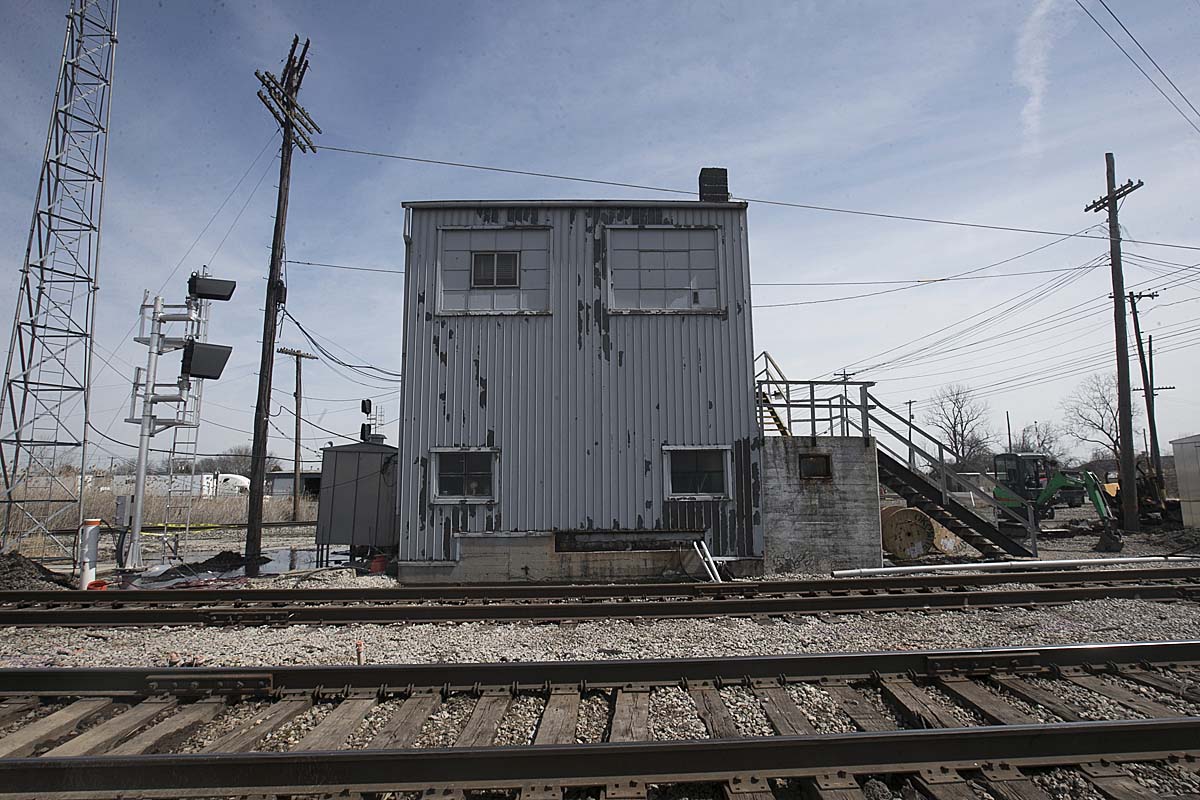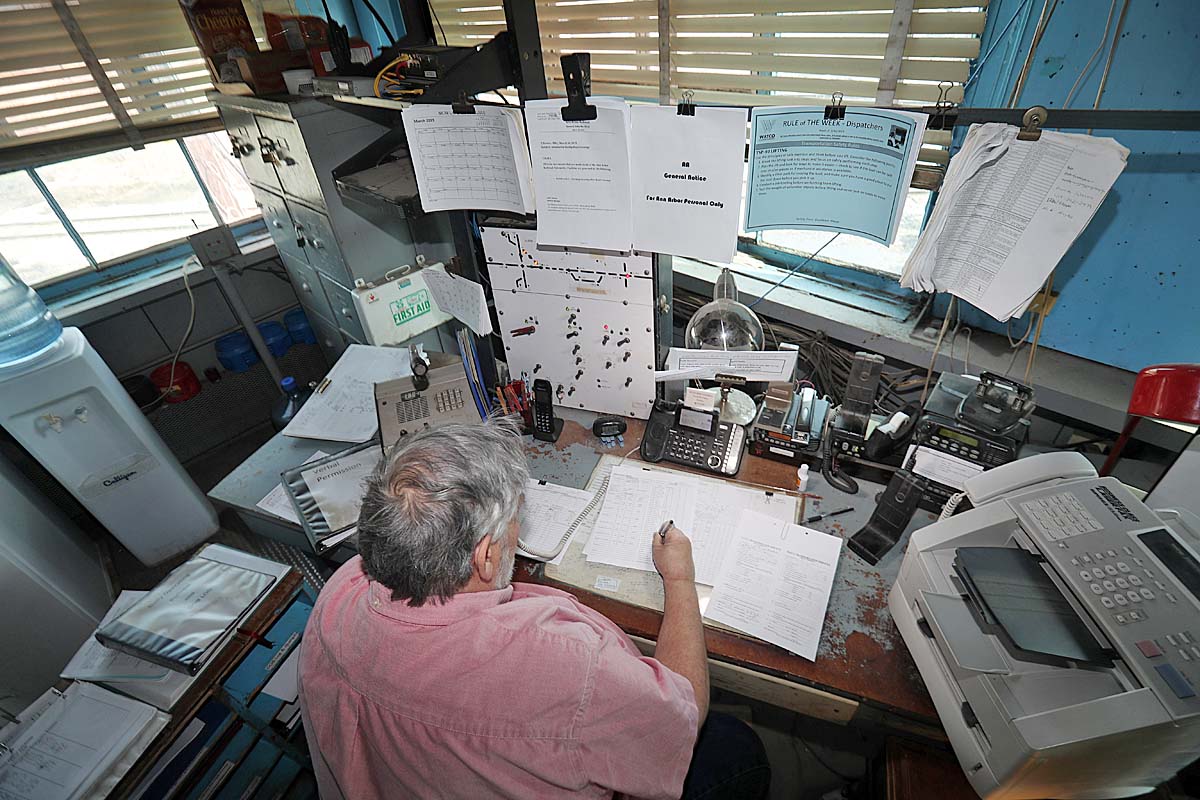“There were days when we had 30 to 40 movements a day at the tower and when we to put out two sets of train orders a day to both Conrail and Chessie trains,” Bohland says. Long gone are the days of the “onion skin” train orders, but Hallett operators still used a train sheet to record CSX Transportation and Ann Arbor trains. A book of expired track warrants memorializes trains and employees on both the CSX and Norfolk Southern for the Ann Arbor crossing at Alexis, just north of Hallett.
“It’s been a great run here,” Bohland says. “I have seen so many changes over the years and the Ann Arbor and the Watco people have treated me amazing in my career.” He will be taking a buyout package.
As of April 15, control was transferred to the CSX dispatching center in Jacksonville, Fla.
Plenty of relics are inside of this tower including the switch machine, relays dating back to 1948 and the signal and switch model board, which is slated to go to a Michigan museum after the tower is decommissioned over the summer when Ann Arbor parent Watco transfers the remaining operators, now considered dispatchers for the 47-mile railroad, at Hallett to its facility in Kansas.
Since its 1949 opening, Hallett has controlled the crossing of the Toledo Terminal, now CSX’s double-track belt line around the city, with the Ann Arbor, along with several other lines in the immediate are. Operators also served as dispatchers for the railroad, which stretches to Osmer, north of Ann Arbor, Mich.
Following the Conrail split in 1999, control of Hallett was divided one-third to Ann Arbor and two thirds to CSX, but the Ann Arbor operators remained, dating back to the original operating agreement of the tower. This gave the AA a unique situation, in that it was able to keep the tower open longer others in the area. Two years of negotiating, spurred by the federal positive train control mandate, led to a signal system upgrade, and the transition to hand-throw switches in and out of the Ann Arbor’s nearby Ottawa Yard. According to Bohland, this change will eliminate many issues that have occurred during winter weather due to a lack of switch heaters on tower-controlled switches in the interlocking.
As the rail industry closes a century of manned tower operations, a new one opens with PTC-compliant signals and switches. Employees like Bohland may soon be gone from the rail scene, but will never be forgotten as part of the history that has shaped railroading history.
For more on Hallett, see the August 2018 issue.
















“As the rail industry closes a century of manned tower operations, a new one opens with PTC-compliant signals and switches.”
This sentence implies that PTC is a driving force behind tower closures. The vast majority of towers have closed already, and did so before PTC was even conceived. Also, towers have been in use far longer than a “century,” more like one and three-quarters centuries.
God I hope this relic does not get torn down and sold for scrap